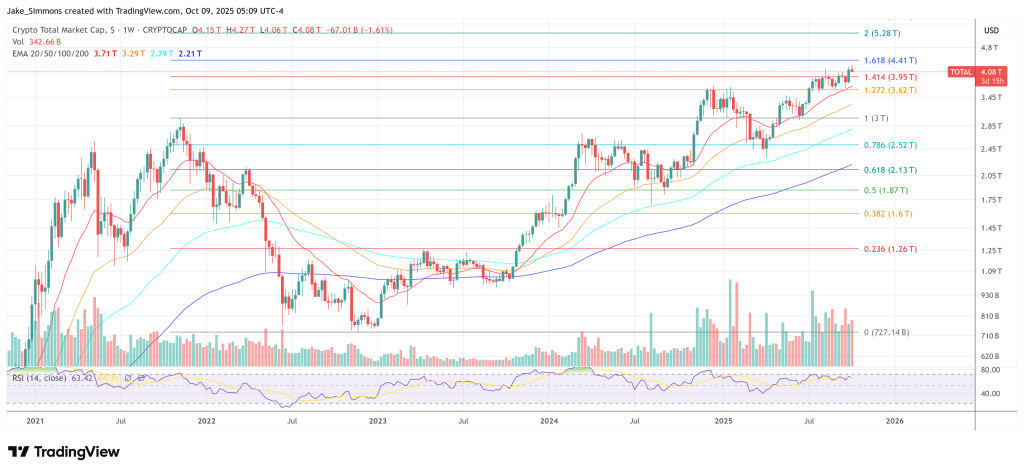Polymarket founder Shayne Coplan—newly thrust into the broader financial spotlight after Bloomberg placed him on its Billionaires Index as the youngest self-made member—has ignited fresh speculation about a native token for the event-markets platform. In a terse post on X, Coplan simply wrote: “$BTC $ETH $BNB $SOL $POLY ,” a construction that bracketed an unannounced “$POLY” ticker alongside four of the market’s largest assets and set off immediate debate about token timing, design, and whether an airdrop could accompany any launch.
$BTC$ETH$BNB$SOL$POLY
https://t.co/HmMobU6nBh
— Shayne Coplan
(@shayne_coplan) October 8, 2025
Will Polymarket Launch A Token?
The timing of the tease is striking. On Tuesday, Intercontinental Exchange (ICE)—the owner of the New York Stock Exchange—announced a strategic investment of up to $2 billion in Polymarket that implies a roughly $8 billion pre-money valuation. ICE framed the deal as a bet on the institutionalization of event-based information markets and their underlying data exhaust. “Intercontinental Exchange… announced a strategic investment in Polymarket,” the company said, specifying the “up to $2 billion” commitment and the approximate valuation impact.
Polymarket’s trajectory has been anything but linear. In January 2022, the US Commodity Futures Trading Commission issued a cease-and-desist order and a $1.4 million civil monetary penalty over unregistered event-based binary options, requiring the platform to wind down non-compliant markets. The CFTC’s order also documented the firm’s cooperation and remedial steps. Those actions forced Polymarket to rebuild its compliance posture even as prediction markets were gaining cultural relevance during major political events and sports seasons.
Against that backdrop, Coplan’s five-ticker line reads like an ambition statement more than a technical spec sheet. There are no published details on issuance mechanics, governance scope, chain selection, or distribution; Polymarket itself has not announced a token, and there is no public documentation outlining airdrop criteria, eligibility windows, or clawbacks.
But the semiotic weight of placing “POLY” in the same breath as Bitcoin, Ether, BNB, and Solana was not lost on traders who have come to expect user distributions when crypto-native platforms formalize decentralization or community governance. Until Polymarket releases definitive materials, any talk of timing, supply, or airdrops remains conjecture.
For now, the only on-record line about a token is Coplan’s—nothing more, nothing less. Given Polymarket’s regulatory history and its newly prominent backer, any tokenization path would likely be sequenced with care. Until formal disclosures arrive, the market will continue to parse a single eight-word post for signal.
Biggest Crypto Airdrop Ever?
As of today, Solana’s market cap hovers around $124–125 billion, with XRP sitting near $170 billion and BNB around $178 billion. That puts SOL roughly at the #6 slot today, below XRP and BNB. In other words, a token placed directly behind SOL would be ~#7 at roughly $120–124 billion in market cap.
By day-one dollar value, the watermark for an airdrop is Arbitrum. The foundation allocated about 1.162 billion ARB to users; contemporaneous trading around $1.35–$1.40 put the aggregate day-one value near $1.6 billion—well ahead of prior marquee drops. For comparison, Uniswap’s Sept. 2020 airdrop distributed 150 million UNI; launch-day pricing implied roughly $0.5–$0.6 billion in value. These would be the benchmarks that POLY would have to surpass.
At press time, the total crypto market cap stood at $4.08 trillion.
